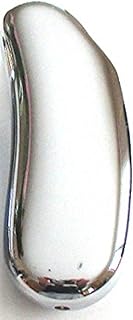BIC Lighters and the Environment: A Complex Relationship
BIC lighters, ubiquitous and seemingly simple, have a surprisingly complex relationship with the environment. Let's break it down:
Positives:
* Lightweight and Durable: BIC lighters are made from durable materials like polypropylene, which are lightweight and can be reused multiple times, reducing the need for constant replacement.
* Relatively Affordable: Their affordability makes them accessible to a wide range of consumers, potentially reducing the use of more wasteful alternatives like matches.
* Improved Design: Over time, BIC has implemented design improvements like child-resistant mechanisms and environmentally friendly butane.
Negatives:
* Plastic Waste: The lighters themselves, despite being reusable, are eventually discarded, contributing to plastic waste in landfills.
* Butane Emissions: Butane, while a relatively clean-burning fuel, is a greenhouse gas that contributes to climate change when released into the atmosphere.
* Lack of Recycling: Most lighters are not easily recyclable, even though they are often made from recyclable materials.
Environmental Impact Mitigation:
* Recycling Initiatives: Some organizations offer recycling programs for lighters, though these are not widespread.
* Reusable Lighters: There are numerous reusable lighter options available, including those made from metal or other durable materials.
* Alternatives: Consider using matches, especially those made from sustainable materials like bamboo.
Overall:
The environmental impact of BIC lighters depends on multiple factors, including production practices, usage patterns, and disposal methods.
Recommendations:
* Minimize Waste: Use lighters responsibly and make sure to dispose of them properly. Look for recycling options in your area.
* Choose Alternatives: Explore reusable lighters or more environmentally friendly options like matches.
* Support Sustainable Practices: Support companies that prioritize sustainable production methods and responsible disposal practices.
By considering the environmental impact of our choices, we can contribute to a more sustainable future.


